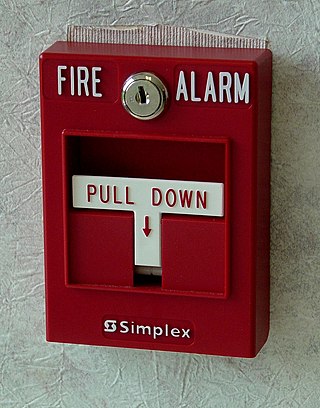
CENELEC is responsible for European standardization in the area of electrical engineering. Together with ETSI (telecommunications) and CEN, it forms the European system for technical standardization. Standards harmonised by these agencies are regularly adopted in many countries outside Europe which follow European technical standards. Although CENELEC works closely with the European Union, it is not an EU institution. Nevertheless, its standards are "EN" EU standards, thanks to EU Regulation 1025/2012.

The European Committee for Standardization is a public standards organization whose mission is to foster the economy of the European Single Market and the wider European continent in global trading, the welfare of European citizens and the environment by providing an efficient infrastructure to interested parties for the development, maintenance and distribution of coherent sets of standards and specifications.

The presence of the logo on commercial products indicates that the manufacturer or importer affirms the goods' conformity with European health, safety, and environmental protection standards. It is not a quality indicator or a certification mark. The CE marking is required for goods sold in the European Economic Area (EEA); goods sold elsewhere may also carry the mark.

A fire door is a door with a fire-resistance rating used as part of a passive fire protection system to reduce the spread of fire and smoke between separate compartments of a structure and to enable safe egress from a building or structure or ship. In North American building codes, it, along with fire dampers, is often referred to as a closure, which can be derated compared against the fire separation that contains it, provided that this barrier is not a firewall or an occupancy separation. In Europe national standards for fire doors have been harmonised with the introduction of the new standard EN 16034, which refers to fire doors as fire-resisting door sets. Starting September 2016, a common CE marking procedure was available abolishing trade barriers within the European Union for these types of products. In the UK, it is Part B of the Building Regulations that sets out the minimum requirements for the fire protection that must be implemented in all dwellings this includes the use of fire doors. All fire doors must be installed with the appropriate fire resistant fittings, such as the frame and door hardware, for it to fully comply with any fire regulations.

Manual fire alarm activation is the process of triggering a fire alarm through a call point, pull station, or other device. This usually causes the alarm to sound the evacuation signal for the relevant building or zone. Manual fire alarm activation requires human intervention, as distinct from automatic fire alarm activation such as that provided through the use of heat detectors and smoke detectors. It is, however, possible for call points/pull stations to be used in conjunction with automatic detection as part of the overall fire detection and alarm system. Systems in completed buildings tend to be wired in and include a control panel. Wireless activators are common during construction.
European Standards, sometimes called Euronorm, are technical standards which have been ratified by one of the three European Standards Organizations (ESO): European Committee for Standardization (CEN), European Committee for Electrotechnical Standardization (CENELEC), or European Telecommunications Standards Institute (ETSI). All ENs are designed and created by all standards organizations and interested parties through a transparent, open, and consensual process.
ISO 13485Medical devices -- Quality management systems -- Requirements for regulatory purposes is a voluntary standard, published by International Organization for Standardization (ISO) for the first time in 1996, and contains a comprehensive quality management system for the design and manufacture of medical devices. The latest version of this standard supersedes earlier documents such as EN 46001 and EN 46002 (1996), the previously published ISO 13485, and ISO 13488.

The British Standards Institution (BSI) is the national standards body of the United Kingdom. BSI produces technical standards on a wide range of products and services and also supplies certification and standards-related services to businesses.
European Organisation for Technical Assessment (EOTA) is a European non-profit association. Its primary purpose is to draft the European Technical Assessment (ETA) documents. Once ratified, these become EU standards. Manufacturers and vendors of products that display the CE mark warrant that their products meet these standards.

The Keymark is a voluntary European certification mark demonstrating compliance with the European Standard (EN). It is owned by CEN, the European Committee for Standardization, and CENELEC, the European Committee for Electrotechnical Standardization.

Deutsches Institut für Bautechnik (DIBt) is a technical authority in the construction sector. The Institute carries out its activities on the basis of an agreement concluded between the Federation and the German federal states (Länder). Its most important task is the approval of non-regulated construction products and construction techniques. The Institute is based in Berlin.

A notified body, in the European Union, is an organisation that has been designated by a member state to assess the conformity of certain products, before being placed on the EU market, with the applicable essential technical requirements. These essential requirements are publicised in European directives or regulations.
The EN 54 Fire detection and fire alarm systems is a series of European standards that includes product standards and application guidelines for fire detection and fire alarm systems as well as voice alarm systems.

British Approvals Service for Cables is an independent accredited certification body headquartered in Milton Keynes, United Kingdom. Here, the organization's dedicated testing laboratory also operates which is believed to be the largest of its type in Europe. BASEC was established in 1971 and principally provides product certification services for all types of cable and wire, ancillary products and management systems within the cable industry. The organization maintains operations throughout the world including Africa, Middle East, America, Asia and Europe.

Construction Products Directive (Council Directive 89/106/EEC)(CPD) is a now repealed European Union Directive which aimed to remove technical barriers to trade in construction products between Member States in the European Union.

Regulation No. 305/2011 of the European Parliament and of the Council of the European Union is a regulation of 9 March 2011 which lays down harmonised conditions for the marketing of construction products and replaces Construction Products Directive (89/106/EEC). This EU regulation is designed to simplify and clarify the existing framework for the placing on the market of construction products. It replaced the earlier (1989) Construction Products Directive (89/106/EEC).

The Cyprus Organisation for Standardisation, or CYS, is the national standardisation body of Cyprus, whose principal activity is the production of standards and the supply of standards-related services.
EN 16114 "Management consultancy services" is a standard published by the European Committee for Standardization (CEN) on September 28, 2011. It focuses on the providing of management consulting services by management consultancy service providers (MCSPs).
CEN/TC 434 is a technical body within the European Committee for Standardization (CEN) developing standards in the field of Electronic Invoicing.

UK Conformity Assessed (UKCA) marking is a conformity mark that indicates conformity with the applicable requirements for products sold within Great Britain. Products with the CE mark are also acceptable in the UK market.














